Special Report
These Colleges Have the Most Diverse Student Bodies

Published:
Last Updated:

For many young Americans, college is often the first time they have the chance to meet and socialize with people from other racial, ethnic, or geographic backgrounds. This can provide students with important experience as they begin the next phase of their lives.
Elon University Professor of Communications Dr. Naeemah Clark told 24/7 Wall St. in an interview that bringing in a student body with a wide variety of backgrounds allows students to learn how to “approach real-world problems with more realistic solutions. It just makes the educational experience deeper. It makes us better critical thinkers.” Diversity can also help expose students to new points of view and potentially shape their political preferences going forward.
24/7 Wall St. reviewed U.S. Department of Education data on the chance that two randomly selected students would have a different racial or ethnic background, or different U.S. citizenship status, at four-year American colleges to determine the colleges with the most diverse student bodies. Across all undergraduates nationwide, such a likelihood is about 69.6%. Among the schools on this list, the likelihood ranges 77.9% to 83.2%.
Many of the most diverse schools also happen to be among the hardest to get into. The average American college admits 55.5% of applicants, but most schools on this list admit less than half of applicants. A handful even have admission rates in the single digits. These are the hardest colleges to get into.
Click here to see the colleges that have the most diverse student bodies
Click here to see the colleges with the least diverse student bodies
Click here to read our detailed findings and methodology

25. San Francisco State University
> Located in: San Francisco, CA
> Chance two random students are a different race, ethnicity, or citizenship: 77.9%
> Largest racial/ethnic group: Hispanic (36.6% of U.S. students)
> Undergraduate enrollment: 26,531
> Avg. cost of attendance: $22,313
San Francisco State University is one of the most diverse colleges in the nation. There is a nearly 78% chance that two randomly selected students would be from a different racial or ethnic group, or will have a different U.S. citizenship status. Of American undergraduates at SFSU, 36.6% identify as Hispanic. The other largest demographic groups are Asian (27.6%) and white (18.4%).
SFSU has several programs within its Division of Equity and Community Inclusion that aim to promote equity and facilitate intercultural dialogue. These programs include the Asian American and Pacific Islander Student Services unit, the Black Unity Center, and the Dream Resource Center for undocumented students.
[in-text-ad]
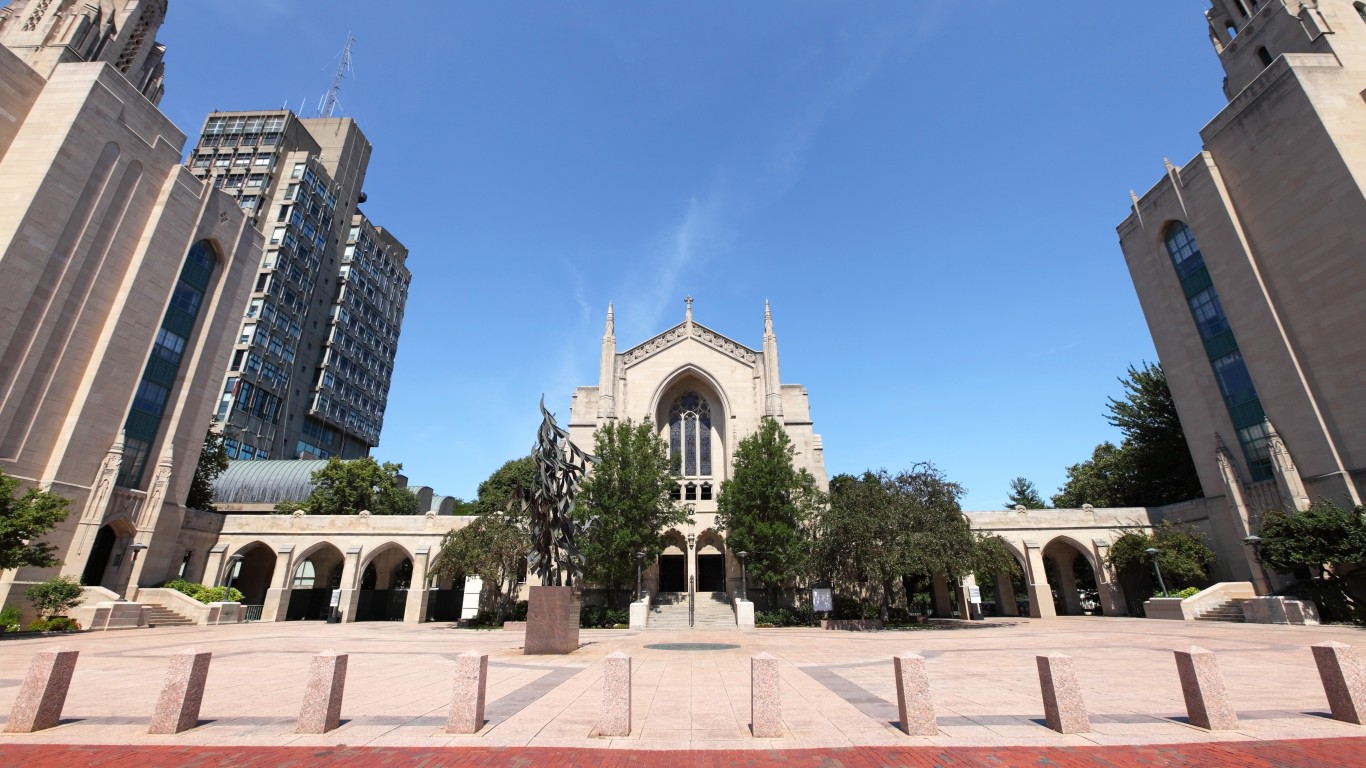
24. Boston University
> Located in: Boston, MA
> Chance two random students are a different race, ethnicity, or citizenship: 78.0%
> Largest racial/ethnic group: White (47.0% of U.S. students)
> Undergraduate enrollment: 18,515
> Avg. cost of attendance: $67,879
Boston University is one of five higher learning institutions in Massachusetts to rank among the 25 most diverse universities and colleges in the country.
More than 21% of undergraduates at BU are nonresident aliens, the highest share among all schools to rank in the 25 most diverse. There is a 78% chance two randomly selected students will have a different racial or ethnic background, or will have a different U.S. citizenship status. Boston University is a very selective school, with an admissions rate of 22.1%. Nationally-recognized, highly-selective schools often have much more diverse applicants, which may contribute to a greater diversity of students.

23. Rice University
> Located in: Houston, TX
> Chance two random students are a different race, ethnicity, or citizenship: 78.0%
> Largest racial/ethnic group: White (37.7% of U.S. students)
> Undergraduate enrollment: 3,992
> Avg. cost of attendance: $60,518
The only Texas school on this list, Rice University’s American undergraduate population is composed of 37.7% white students, 29.1% Asian students, 17.6% hispanic students, 8.1% black students, and 4.5% students who identify as multi-racial. Roughly half of Rice Students are from Texas, which is one of the most racially and ethnically diverse states in the country.
The school has numerous working groups within its Council on Diversity and Inclusion, including affirmative action services, Multicultural Community Relations, and more.
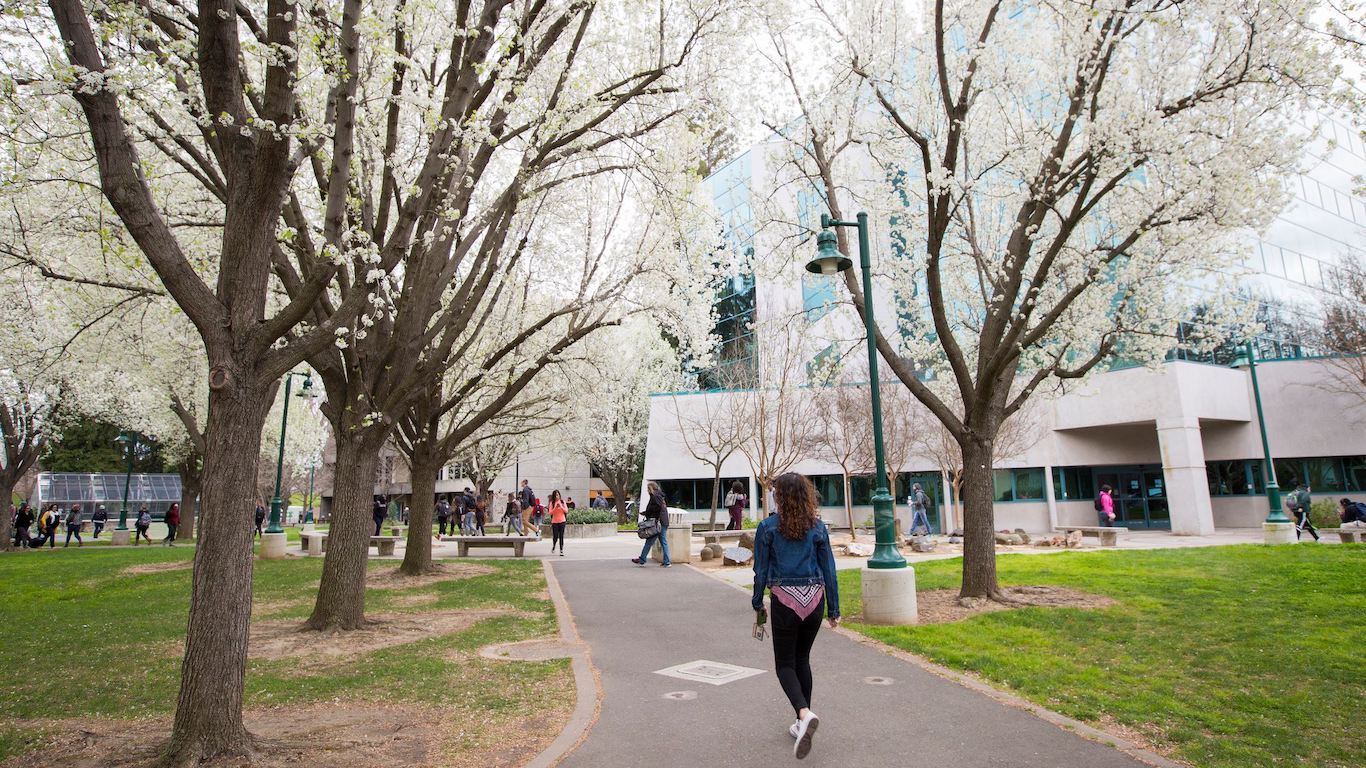
22. California State University-Sacramento
> Located in: Sacramento, CA
> Chance two random students are a different race, ethnicity, or citizenship: 78.1%
> Largest racial/ethnic group: Hispanic (33.3% of U.S. students)
> Undergraduate enrollment: 28,813
> Avg. cost of attendance: $18,989
At California State University-Sacramento, students who identify as Hispanic make up about one-third of the American undergraduate student body. It is one of just four schools to rank among the 25 most diverse in the country in which the largest racial or ethnic group on campus is Hispanic.
CSU-Sacramento is a large, public school, drawing many of its students from Sacramento County, which is among the most diverse counties in America. There is a greater than 70% chance that two randomly selected county residents would have a different race, ethnicity, or citizenship status. The school draws almost all of its students from nearby, as just 1% of full-time undergraduate students come from outside of California to attend the school.
[in-text-ad-2]
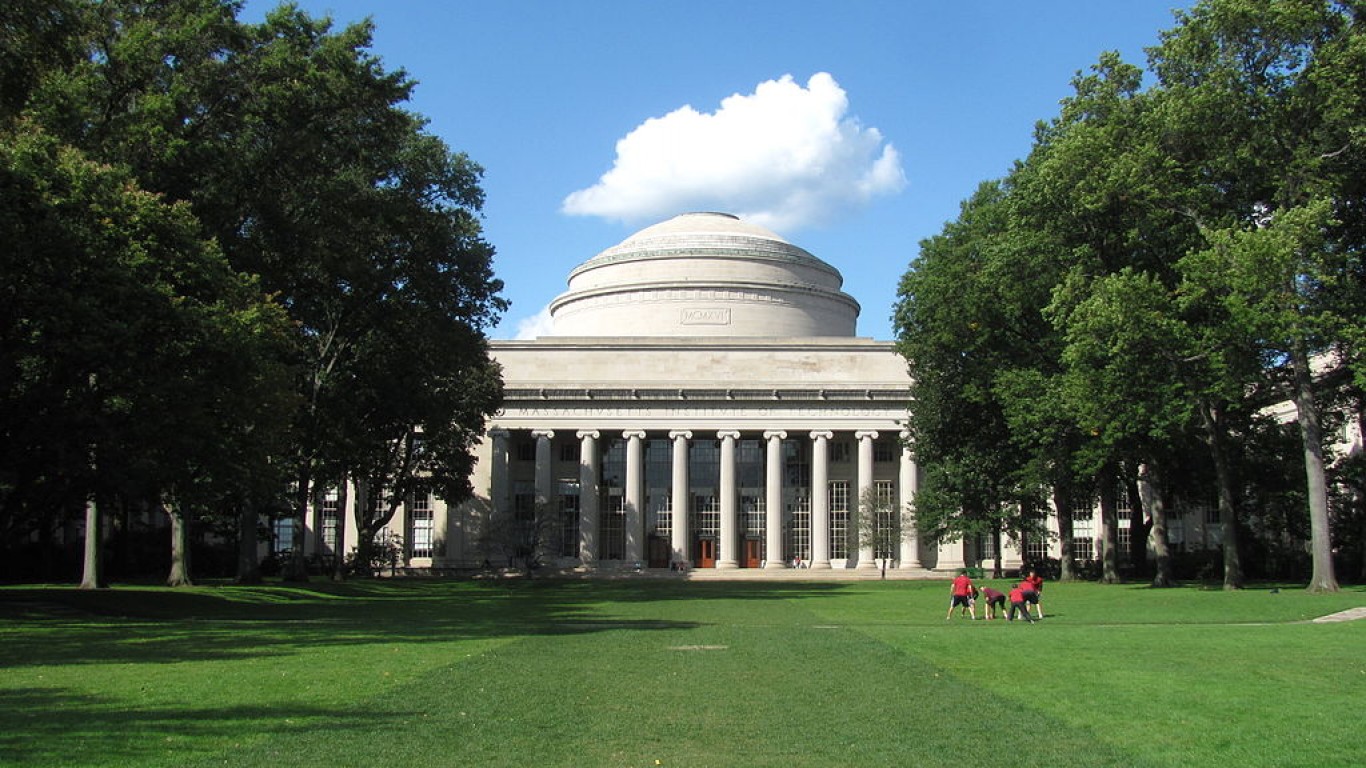
21. Massachusetts Institute of Technology
> Located in: Cambridge, MA
> Chance two random students are a different race, ethnicity, or citizenship: 78.2%
> Largest racial/ethnic group: White (35.2% of U.S. students)
> Undergraduate enrollment: 4,602
> Avg. cost of attendance: $65,478
MIT is one of the most selective schools in the country, with just 6.7% of applicants making it into the prestigious institution. Its large applicant pool may allow the school to factor in racial and ethnic diversity more than less selective schools when deciding on which applicants to admit.
Massachusetts and Middlesex County, where MIT is located, are not especially diverse, but the school has attracted students from all 50 states. White students make up the largest demographic group among respondents, at 35.2%. Asian students make up the next largest group at 31.0% followed by Hispanic students at 16.9%.
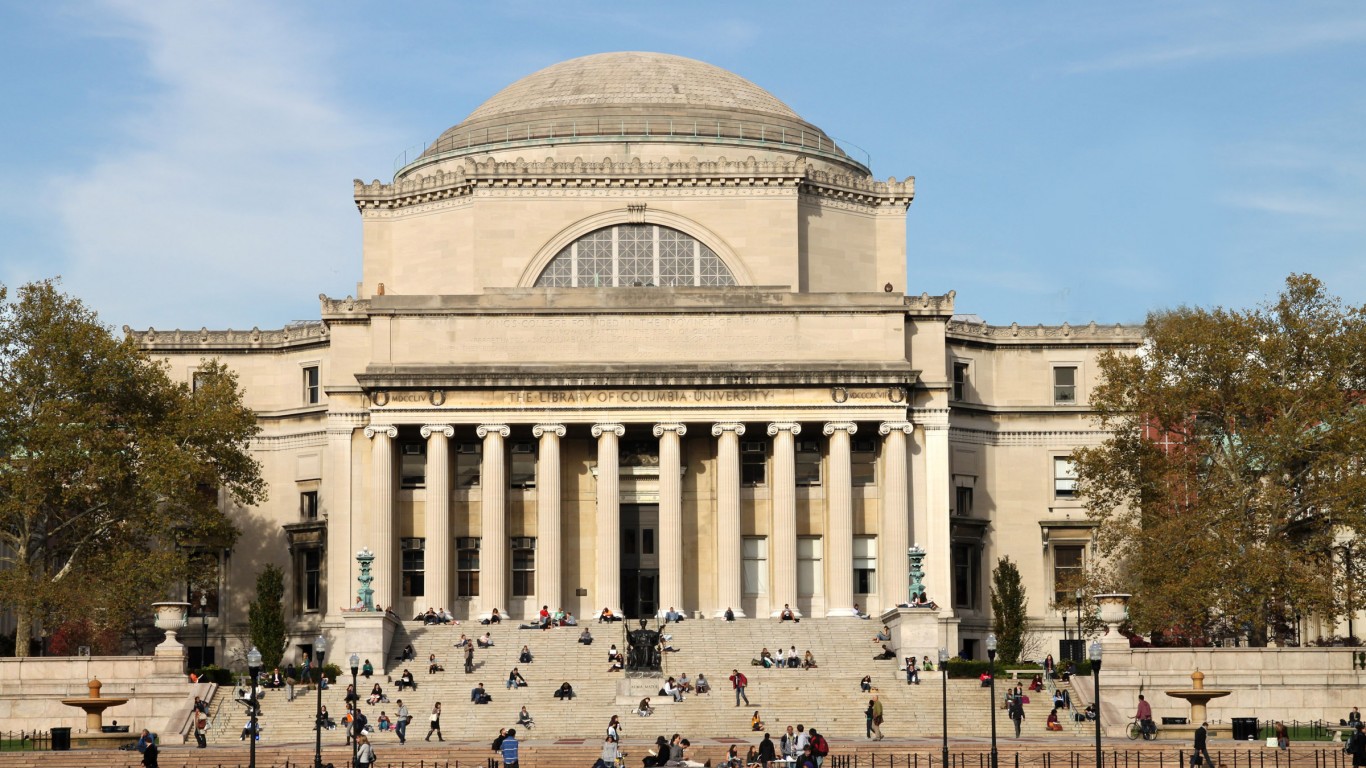
20. Columbia University
> Located in: New York, NY
> Chance two random students are a different race, ethnicity, or citizenship: 78.3%
> Largest racial/ethnic group: White (43.7% of U.S. students)
> Undergraduate enrollment: 8,216
> Avg. cost of attendance: $71,972
Columbia is one of the most diverse colleges in the country and is located in one of the most diverse parts of the country — New York City. White students comprise the largest racial or ethnic group of American undergraduates, at 43.7%, followed by Asian students at 21.0%, and Hispanic students at 16.3%. Columbia attracts well over 1,000 international students as well.
The Ivy League school is by far the most expensive institution among the most diverse. Its average cost of attendance is nearly $72,000 per year, while no other school on this list costs more than $68,000 per year.
[in-text-ad]
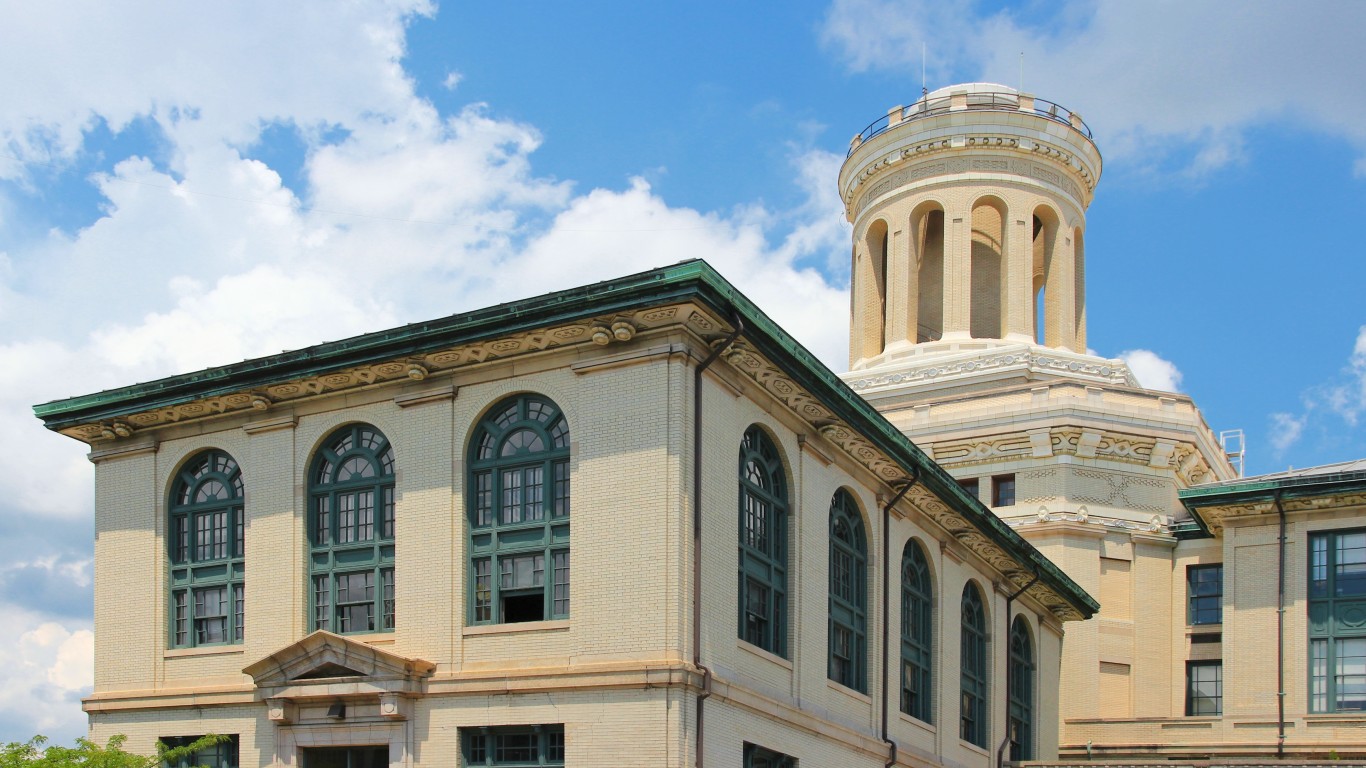
19. Carnegie Mellon University
> Located in: Pittsburgh, PA
> Chance two random students are a different race, ethnicity, or citizenship: 78.3%
> Largest racial/ethnic group: Asian (38.0% of U.S. students)
> Undergraduate enrollment: 6,589
> Avg. cost of attendance: $67,980
With 38.0% of American students at Carnegie Mellon University identifying as Asian, the school is one of three colleges among the most diverse in which Asian is the largest racial or ethnic group. CMU also has a large international population of more than 1,500 students from dozens of countries. The school has a relatively high share of foreign students, with 18.0% of undergraduates identifying as nonresident aliens when surveyed.
Carnegie Mellon has a Center for Student Diversity and Inclusion, which “supports and connects historically underrepresented students and those who are first in their family to attend college.” This center holds events such as the Martin Luther King, Jr. Lecture Series and an overnight, pre-orientation retreat to create community among minority first-year students.

18. University of California-Santa Barbara
> Located in: Santa Barbara, CA
> Chance two random students are a different race, ethnicity, or citizenship: 78.3%
> Largest racial/ethnic group: White (35.0% of U.S. students)
> Undergraduate enrollment: 23,070
> Avg. cost of attendance: $34,990
Another large public university located in California, the University of California-Santa Barbara is one of the 20 most diverse colleges in the United States. Public universities tend to be more accessible to a wide variety of Americans due to cost, and UCSB is one of the least expensive schools on this list, costing just under $35,000 per year. There is a 78.3% chance two randomly selected students will have a different racial or ethnic background.
While students identifying as white make up the largest share of American undergraduates at UCSB, nearly 30% of respondents identify as Hispanic, and more than 20% identify as Asian.
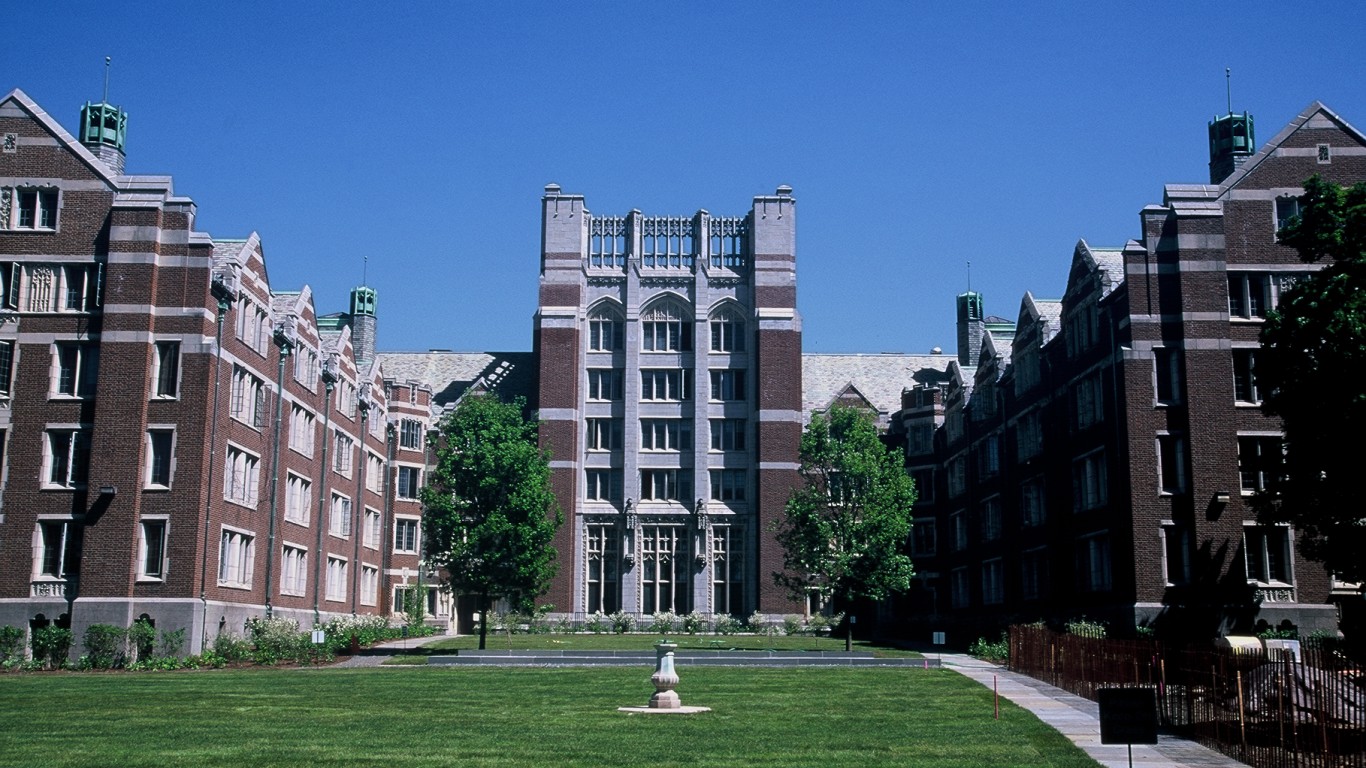
17. Wellesley College
> Located in: Wellesley, MA
> Chance two random students are a different race, ethnicity, or citizenship: 78.4%
> Largest racial/ethnic group: White (42.0% of U.S. students)
> Undergraduate enrollment: 2,534
> Avg. cost of attendance: $65,966
Wellesley College is one of the Seven Sisters colleges, a group of prestigious institutions founded to give female students the same high quality education of Ivy League schools.
The school is very racially, ethnically, and geographically diverse, with a 78.4% chance that two randomly selected students would be of a different race, ethnicity, or U.S. citizenship status. Among respondents, 23.9% identified as Asian, 42.0% as white, 14.5% as Hispanic, 7.2% as black, and 7.0% as multi-racial.
[in-text-ad-2]
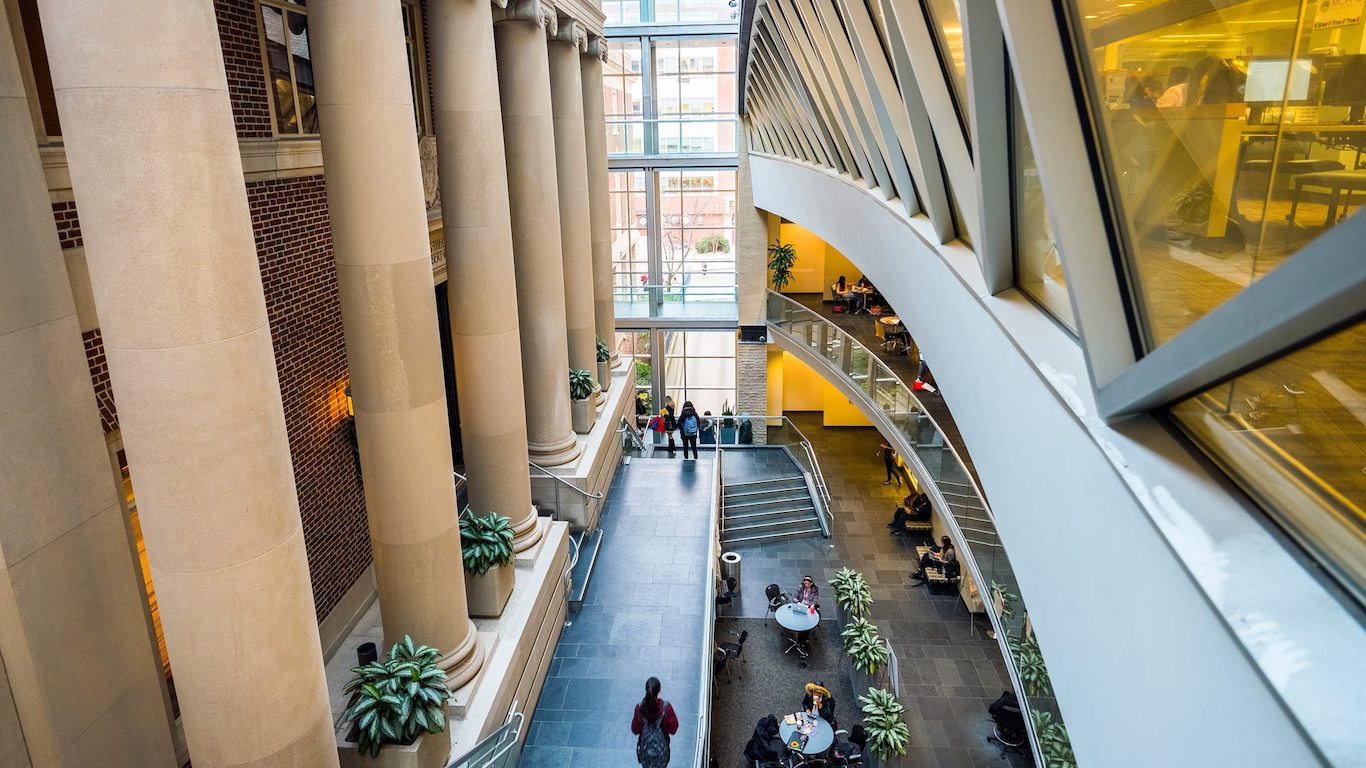
16. MCPHS University
> Located in: Boston, MA
> Chance two random students are a different race, ethnicity, or citizenship: 78.4%
> Largest racial/ethnic group: White (42.8% of U.S. students)
> Undergraduate enrollment: 3,966
> Avg. cost of attendance: $49,645
The Massachusetts College of Pharmacy and Health Sciences, or MCPHS University, is one of three schools in Boston to rank among the most diverse. MCPHS has by far the highest admission rate of any school on this list, with 93.5% of applicants earning admission. The school focuses on the health care fields of study.
MCPHS University is one of just five colleges among the most diverse in which black students make up more than 10% of the American undergraduate population, at 10.2%. Among respondents, more than a quarter identify as Asian, and 9.4% identify as Hispanic.
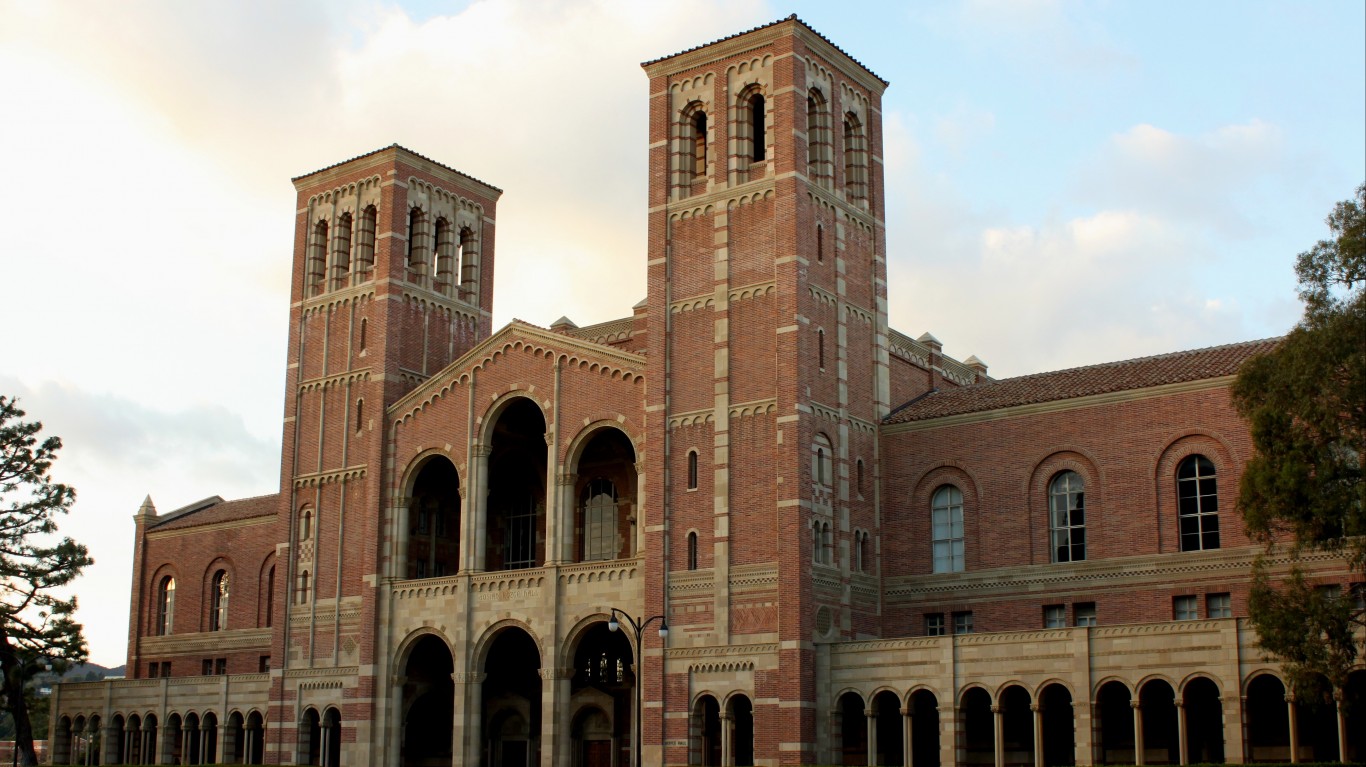
15. University of California-Los Angeles
> Located in: Los Angeles, CA
> Chance two random students are a different race, ethnicity, or citizenship: 78.5%
> Largest racial/ethnic group: Asian (31.6% of U.S. students)
> Undergraduate enrollment: 31,577
> Avg. cost of attendance: $33,751
University of California-Los Angeles, better known as UCLA, is one of three colleges among the 25 most diverse in which Asian students comprise the largest racial or ethnic group of the American undergraduate population, at 31.6% of students. White students account for just over 30% of the population who are not nonresident aliens, and Hispanic students make up 25.0%.
Though UCLA is a large state school, it has a fairly low admissions rate of 14.0%. No other college receives nearly as many applications. For the 2018-2019 school year, over 113,000 prospective students applied to UCLA, while no other school in America had more than 100,000.
[in-text-ad]
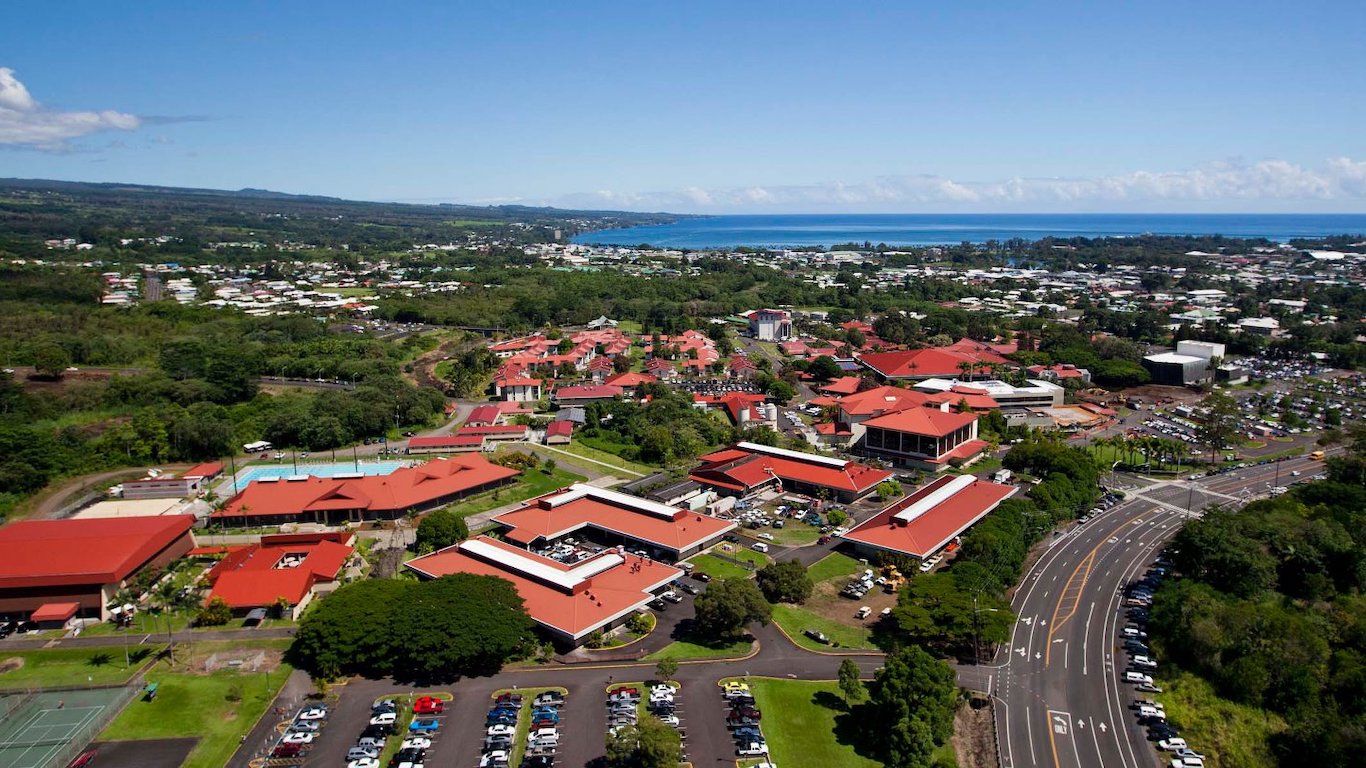
14. University of Hawaii at Hilo
> Located in: Hilo, HI
> Chance two random students are a different race, ethnicity, or citizenship: 78.6%
> Largest racial/ethnic group: Two or more races (36.0% of U.S. students)
> Undergraduate enrollment: 2,816
> Avg. cost of attendance: $21,095
The University of Hawaii at Hilo is the only four-year school with an enrollment of at least 2,500 in which the most common racial/ethnic group among American undergraduates is multi-racial students, at 36.0% of students. As you might expect, it also has by far the highest share of Native Hawaiian or Pacific Islander students, accounting for 9.4% of respondents.
Hilo is located in Hawaii County, the most racially diverse county in the country. There is a 77.8% chance two randomly selected Hawaii County residents will have a different ethnic or racial background. Hawaii is also the most diverse state in the country, with a 75.8% chance two residents are of a different race or ethnicity. Most university students come from the state.

13. California State University-East Bay
> Located in: Hayward, CA
> Chance two random students are a different race, ethnicity, or citizenship: 78.6%
> Largest racial/ethnic group: Hispanic (37.4% of U.S. students)
> Undergraduate enrollment: 12,836
> Avg. cost of attendance: $21,267
At California State University-East Bay, there is a 78.6% chance that two randomly selected students would be of a different race, ethnicity, or U.S. citizenship status, making it one of the most diverse schools in America. CSU East Bay is located just a few miles south of Oakland, in Alameda County — the fifth-most diverse county in the nation.
CSU East Bay is one of four schools to rank among the 25 most diverse in which Hispanic students comprise the largest share of American undergraduates, at 37.4%.

12. University of California-Davis
> Located in: Davis, CA
> Chance two random students are a different race, ethnicity, or citizenship: 78.6%
> Largest racial/ethnic group: Asian (32.9% of U.S. students)
> Undergraduate enrollment: 30,718
> Avg. cost of attendance: $34,435
Of the six large California public schools to make this list, University of California-Davis is the most diverse, with a 78.6% chance that two randomly selected students would have a different racial or ethnic background, or differ in U.S. citizenship status. The largest racial/ethnic group among American undergraduates at the school is Asian students who make up 32.9% of that group. White students comprise 28.7% of American undergraduates, and Hispanic students 27.0%.
UC-Davis also has one of the largest multi-racial populations of any U.S. higher learning institution. More than 1,600 total students identify as multi-racial. This accounts for 6.4% of the total American undergraduate population.
[in-text-ad-2]
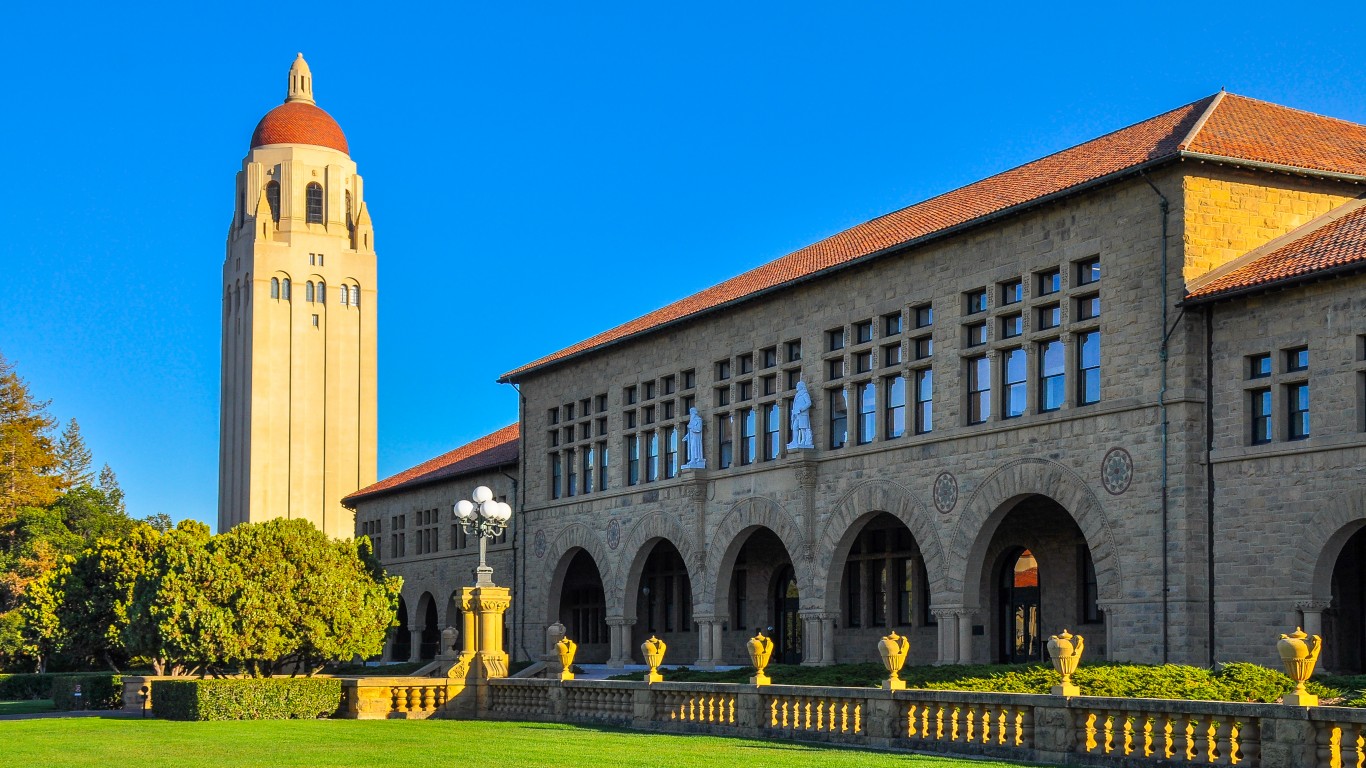
11. Stanford University
> Located in: Stanford, CA
> Chance two random students are a different race, ethnicity, or citizenship: 78.7%
> Largest racial/ethnic group: White (38.0% of U.S. students)
> Undergraduate enrollment: 7,087
> Avg. cost of attendance: $66,696
Among all schools considered for this list, Stanford University is the most selective. Just 4.4% of applicants are admitted to the school, edging out schools like Harvard, Yale, and MIT. A large applicant pool may make it easier for the university to build a highly-diverse student body compared to schools with relatively few applicants.
Among the 25 most diverse colleges in the country, Stanford has the highest share of students identifying as American Indian or Alaska Native in its American undergraduate population, at 0.9%. It is also one of just two schools on this list in which more than 10% of respondents identified as multi-racial.
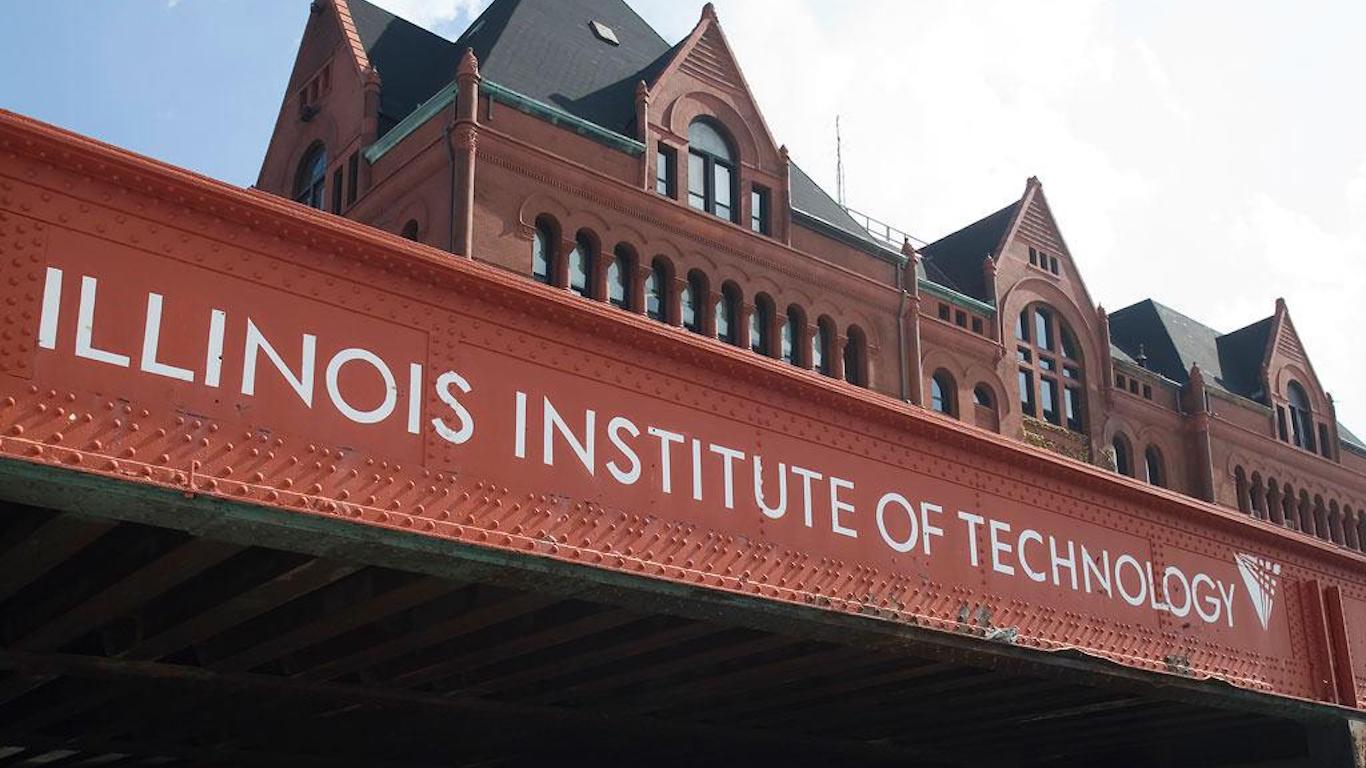
10. Illinois Institute of Technology
> Located in: Chicago, IL
> Chance two random students are a different race, ethnicity, or citizenship: 78.8%
> Largest racial/ethnic group: White (43.5% of U.S. students)
> Undergraduate enrollment: 3,026
> Avg. cost of attendance: $60,489
With a 78.8% chance that two different students are from a different racial or ethnic background, Illinois Institute of Technology is the 10th most diverse school in America. IIT is the only school in the Midwest to appear on this list. A large share of the undergraduate class is from different countries, as 18.8% of undergraduates are classified as nonresident aliens.
[in-text-ad]
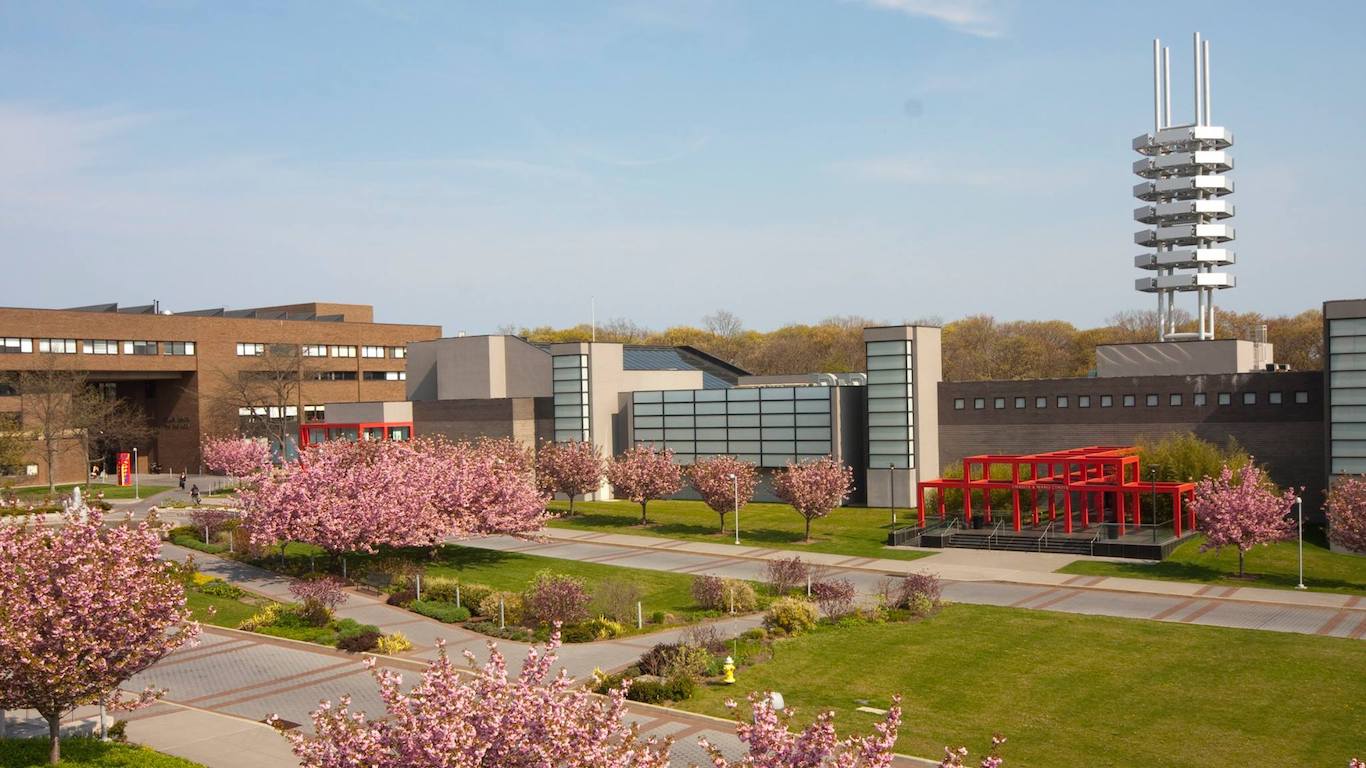
9. Stony Brook University
> Located in: Stony Brook, NY
> Chance two random students are a different race, ethnicity, or citizenship: 79.0%
> Largest racial/ethnic group: White (37.5% of U.S. students)
> Undergraduate enrollment: 17,522
> Avg. cost of attendance: $23,915
Stony Brook University is one of just nine American colleges at which there is at least a 79% chance two randomly selected students will have a different race, ethnicity, or U.S. citizenship status. The school, located on Long Island, has an American undergrad population comprising 37.5% white students, 30.0% Asian students, 14.1% Hispanic students, and 8.2% black students, among others.
Many of the colleges on this list are also among the most expensive. At the 25 most diverse schools, the average cost for one year is just over $47,000. At Stony Brook, it costs nearly half that amount, at just under $24,000.
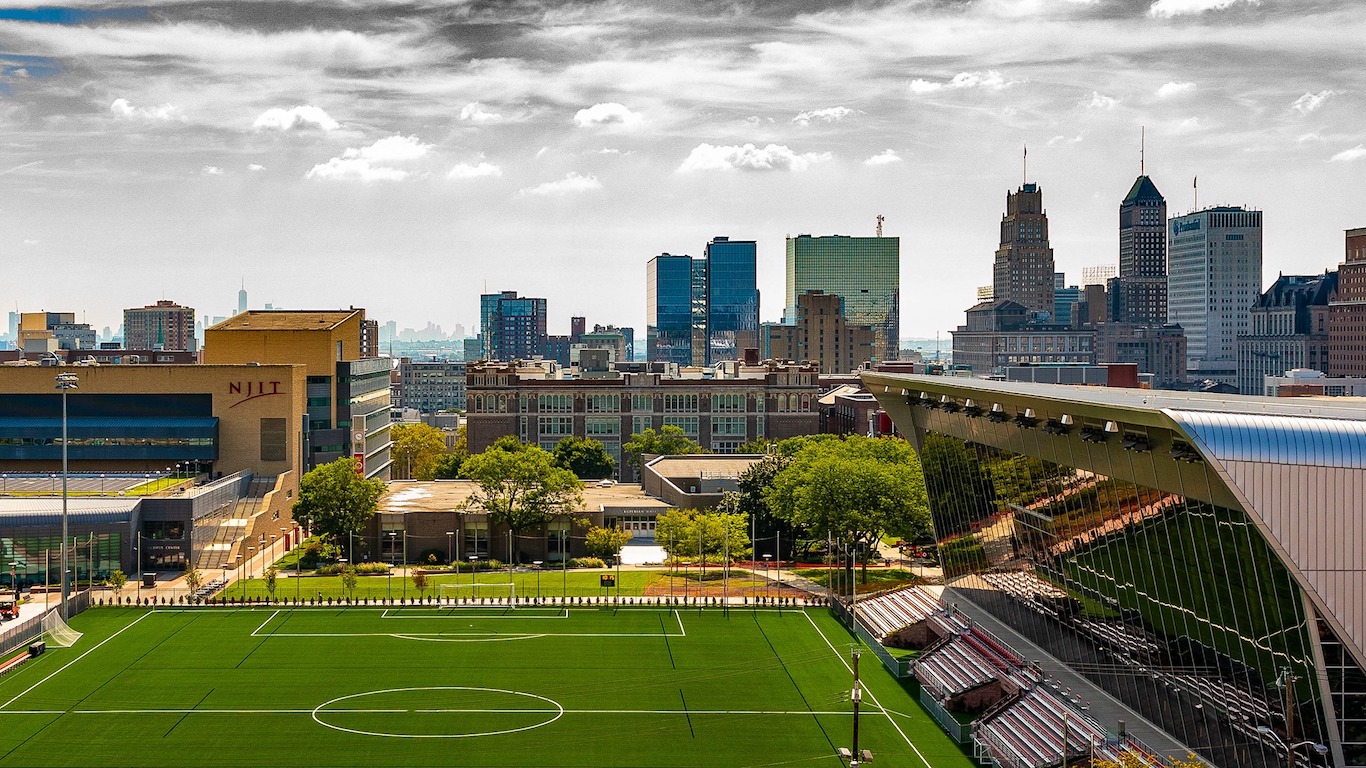
8. New Jersey Institute of Technology
> Located in: Newark, NJ
> Chance two random students are a different race, ethnicity, or citizenship: 79.3%
> Largest racial/ethnic group: White (33.9% of U.S. students)
> Undergraduate enrollment: 8,532
> Avg. cost of attendance: $29,851
New Jersey Institute of Technology is one of the most diverse colleges in the nation, with three different racial groups representing more than 20% of the total American undergraduate population. White students make up 33.9% of this group, followed by Asian students at 23.1%, and Hispanic students at 22.7%.
NJIT has a Diversity and Inclusion department that promotes “self-awareness, mutual understanding, knowledge, and respect for others.” It also has over a dozen identity-based clubs and organizations, including groups for Latin, African, Filipino, Korean, and Persian students, among others.

7. Cornell University
> Located in: Ithaca, NY
> Chance two random students are a different race, ethnicity, or citizenship: 79.4%
> Largest racial/ethnic group: White (40.8% of U.S. students)
> Undergraduate enrollment: 15,182
> Avg. cost of attendance: $67,613
Cornell University is one of two Ivy League schools to rank among the most diverse colleges in the country, along with Columbia University. Cornell is located in an area that is not very diverse, but most students are not from Tompkins County, where the school is located, or even New York state.
Cornell is among the most diverse schools with a 79.4% chance two randomly selected students are of a different race, ethnicity, or citizenship. Of the school’s American undergraduates, 21.6% identify as Asian, 7.7% identify as black, and 15.1% identify as Hispanic.
[in-text-ad-2]

6. Johns Hopkins University
> Located in: Baltimore, MD
> Chance two random students are a different race, ethnicity, or citizenship: 79.4%
> Largest racial/ethnic group: White (36.5% of U.S. students)
> Undergraduate enrollment: 6,064
> Avg. cost of attendance: $67,603
Johns Hopkins University is the only school located in Maryland to rank among the most diverse. Of the American undergraduates at Johns Hopkins, 27.7% identify as Asian, 15.5% identify as Hispanic, and 8.1% identify as black.
Almost none of the Johns Hopkins student body comes from nearby, as 90% of undergraduate students come from out of state. The university is perhaps best known for its prestigious medical school, but even for undergraduates it is a difficult school to attend. It has just an 11.5% admission rate, which may allow the school to be more selective and create a diverse student body when selecting from its applicant pool compared to schools with relatively few applicants.
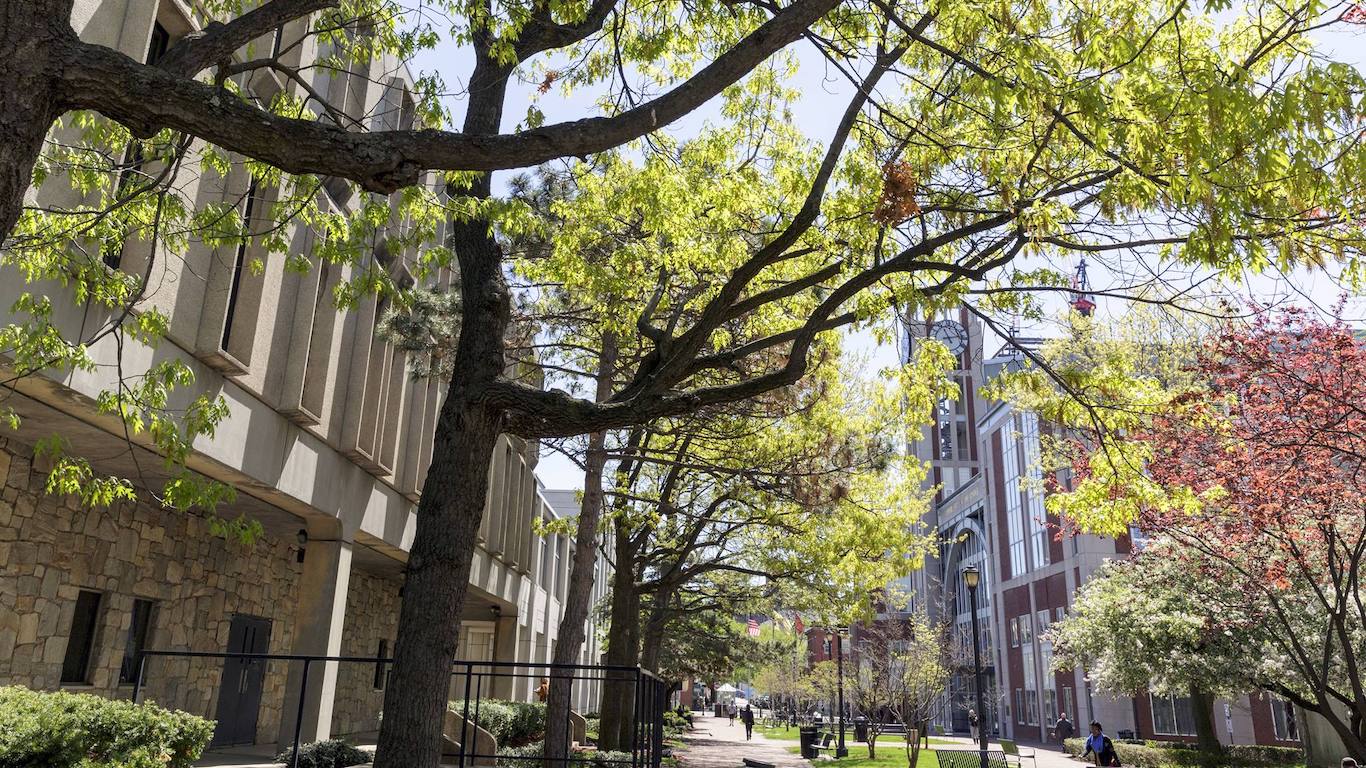
5. Rutgers University-Newark
> Located in: Newark, NJ
> Chance two random students are a different race, ethnicity, or citizenship: 80.0%
> Largest racial/ethnic group: Hispanic (29.8% of U.S. students)
> Undergraduate enrollment: 9,142
> Avg. cost of attendance: $24,719
Rutgers University-Newark is one of just five primarily bachelor’s degree granting in America with at least an 80% chance two randomly selected students are of a different race, ethnicity, or U.S. citizenship status.
Rutgers University-Newark is the only school among the 25 most diverse in which over 20% of American undergraduate students identify as black or African American. Among the other most well-represented racial identities are Hispanic students at 29.8%, white students at 23.3%, and Asian students at 19.5%.
[in-text-ad]
4. University of San Francisco
> Located in: San Francisco, CA
> Chance two random students are a different race, ethnicity, or citizenship: 80.4%
> Largest racial/ethnic group: White (29.7% of U.S. students)
> Undergraduate enrollment: 6,704
> Avg. cost of attendance: $63,117
University of San Francisco is one of just two schools in which the largest racial or ethnic group, in this case white students, makes up less than 30% of the overall American undergraduate population. Several other racial groups have nearly as high a share, with Asian students comprising 27.8% of undergraduates, and Hispanic students 25.0%.
USF has one of the highest shares of multi-racial students in its American undergraduate population, at 9.6%. The college is located in San Francisco County, one of the most diverse counties in America, with a 69.2% chance two random county residents have a different background.
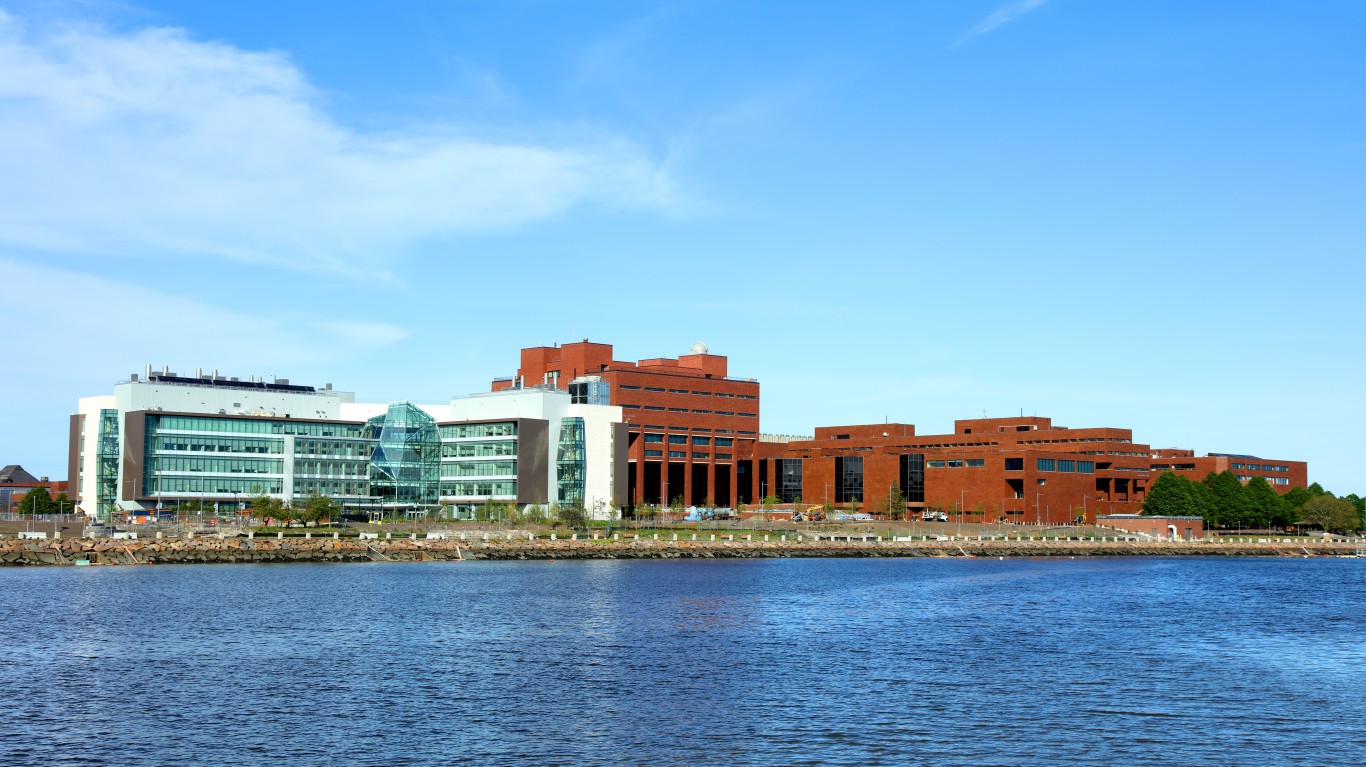
3. University of Massachusetts-Boston
> Located in: Boston, MA
> Chance two random students are a different race, ethnicity, or citizenship: 80.6%
> Largest racial/ethnic group: White (37.2% of U.S. students)
> Undergraduate enrollment: 12,714
> Avg. cost of attendance: $21,777
University of Massachusetts-Boston is the only large four-year public school in America in which there is a greater than 80% chance that two randomly selected students would have a different race, ethnicity, or U.S. citizenship status. The college is relatively accessible, as it has an acceptance rate of 77% and costs far less than most other schools on this list to attend, at under $22,000 a year.
Black students make up 18.8% of the American undergraduate population — a share nearly 50% higher than at the average American school considered and the second highest share among the most diverse colleges.
2. New York University
> Located in: New York, NY
> Chance two random students are a different race, ethnicity, or citizenship: 81.4%
> Largest racial/ethnic group: White (35.6% of U.S. students)
> Undergraduate enrollment: 26,733
> Avg. cost of attendance: $67,865
New York University ranks as the second most diverse school in the country, with its American undergraduate population comprising 35.6% white students, 23.5% Asian students, 18.8% Hispanic students, and 8.9% black students. Despite the fact that it is a fairly large and expensive school, NYU is one of the hardest to get into, with just a 20% acceptance rate.
NYU also has a significant international contingent in its undergraduate ranks, with 20.6% of those students identifying as nonresident aliens. Just one other school to rank among the most diverse has at least 20% international students.
[in-text-ad-2]
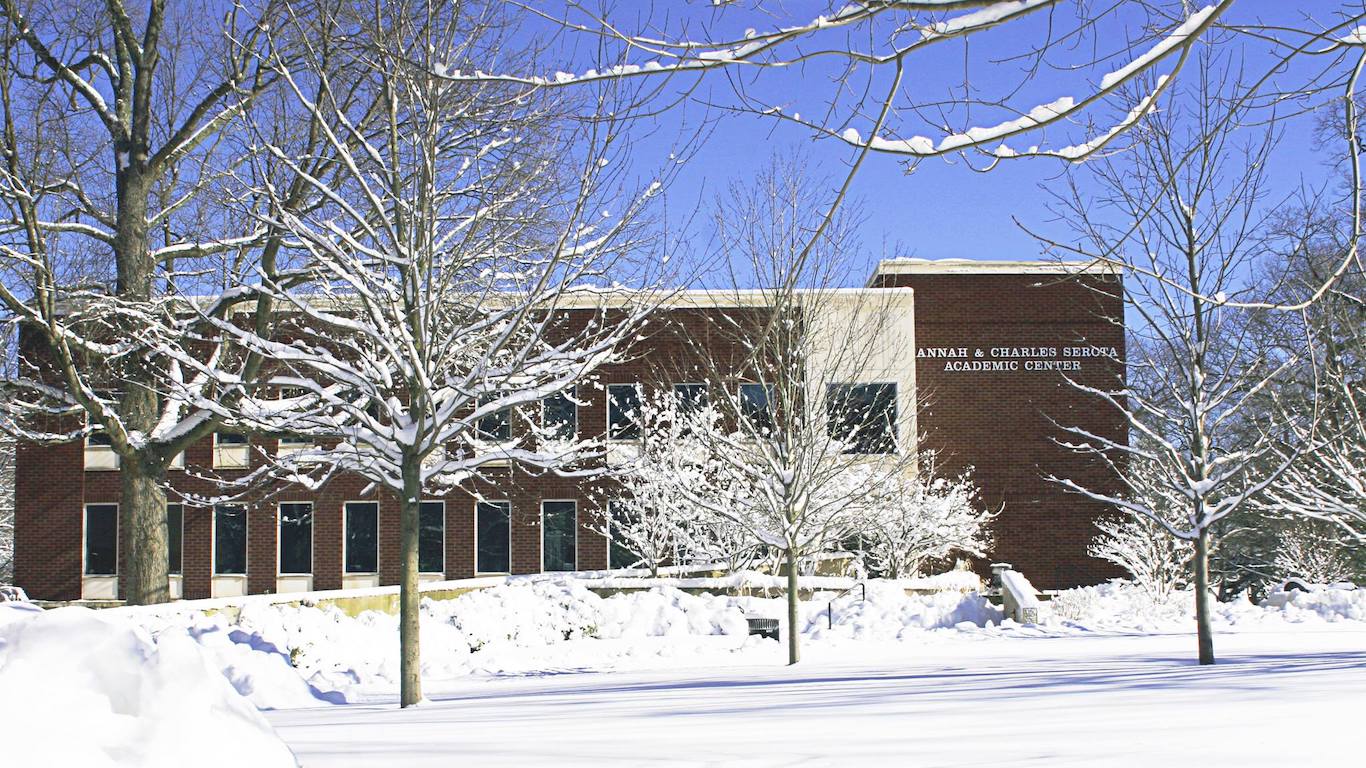
1. New York Institute of Technology
> Located in: Old Westbury, NY
> Chance two random students are a different race, ethnicity, or citizenship: 83.2%
> Largest racial/ethnic group: White (31.3% of U.S. students)
> Undergraduate enrollment: 3,648
> Avg. cost of attendance: $46,971
At New York Institute of Technology there is an 83.2% chance two random students would be of a different race, ethnicity, or U.S. citizenship status — the highest chance of any large four-year college in the country. Of American undergraduates, 31.3% identify as white, 21.6% identify as Asian, 20.2% identify as Hispanic, 11.4% identify as black, and 5.6% identify as multi-racial.
The private technological institute, located on Long Island, recently established the Diversity, Equity, and Inclusivity Task Force. The task force aims to “welcome diversity, foster equity, and promote a culture of inclusion” at the school. Unlike the majority of the most diverse schools, NYUT has a fairly high acceptance rate — 75.7% of applicants were accepted in the most recent school year. Nationwide, the average acceptance rate is 55.5%.
Detailed Findings
American colleges have, at least in recent years, have increased their efforts on diversifying their campuses and ensuring that students from historically underrepresented backgrounds have spaces where inclusivity is the priority.
Many schools have opened diversity and inclusion offices and started clubs for specific groups. Experts point out that broadening campus diversity is helpful to all students — not just those from historically underrepresented backgrounds.
In an interview with 24/7 Wall St., Dr. Naeemah Clark, Professor of Communications at Elon University, said, “If the only students we have in the classroom have the same exact experience then we’re not doing anyone a service by giving them the same ideas and having the same conversations that they’ve always had.”
Many of the schools on this list are large public schools that are located in relatively diverse areas, mostly in California. Colleges like California State University-Sacramento, University of California-Santa Barbara, University of Massachusetts-Boston, University of California-Davis, and more offer significant discounts in tuition for in-state students. The discounts likely help a broad array of students from nearby communities attend these schools, so the diversity in the surrounding community is reflected in the student body.
Yet a large share of the other schools on this list have very diverse student bodies for the complete opposite reason. Ivy League colleges like Columbia and Cornell are on this list, as do several other elite colleges, like Massachusetts Institute of Technology and New York University. While many schools have to accept a vast majority of applicants, these prestigious universities only take in a fraction of prospective students. When deciding which to admit, these schools can ensure that they have a diverse student body to contribute to the overall quality of the college experience for all of their students.
It is important to note that the questions students answered for this survey are not perfect. It can be difficult for surveys to account for the entire identity of multi-racial students, like those with Afro Cubana heritage. “There’s all these intersections of identity that aren’t really picked up on the form. I don’t know when we’re going to address that, but it’s worth conversation.” Clark said.
Methodology
To determine the colleges and universities with the most diverse student bodies, 24/7 Wall St. ranked U.S. colleges and universities based on the likelihood that two undergraduate students picked at random would be of two different races, ethnicities, or U.S. citizenship status.
Data on racial and ethnic composition for U.S. colleges and universities came from the U.S. Department of Education’s Integrated Postsecondary Education Data System and is for the fall 2018 school semester. All race and ethnicity data is self reported. The categories included in the survey are: American Indian or Alaska Native; Asian; black or African American; Hispanic; Native Hawaiian or other Pacific Islander; white; two or more races; or nonresident alien.
Using this data, we calculated the index based on a diversity index originally developed in 1991 by Philip Meyer of the University of North Carolina and Shawn McIntosh of USA Today.
Supplemental data on average cost of attendance in the 2016-2017 school year, the admission rate in the 2018-2019 school year, and the size of the undergraduate population in fall 2018 also came from IPEDS.
We limited our universe to primarily bachelor’s degree granting institutions. Colleges at which more than 10% of undergraduate respondents chose not to identify as a specific race or ethnicity were excluded. Additionally, we only considered schools with at least 2,500.
Start by taking a quick retirement quiz from SmartAsset that will match you with up to 3 financial advisors that serve your area and beyond in 5 minutes, or less.
Each advisor has been vetted by SmartAsset and is held to a fiduciary standard to act in your best interests.
Here’s how it works:
1. Answer SmartAsset advisor match quiz
2. Review your pre-screened matches at your leisure. Check out the advisors’ profiles.
3. Speak with advisors at no cost to you. Have an introductory call on the phone or introduction in person and choose whom to work with in the future
Get started right here.
Thank you for reading! Have some feedback for us?
Contact the 24/7 Wall St. editorial team.